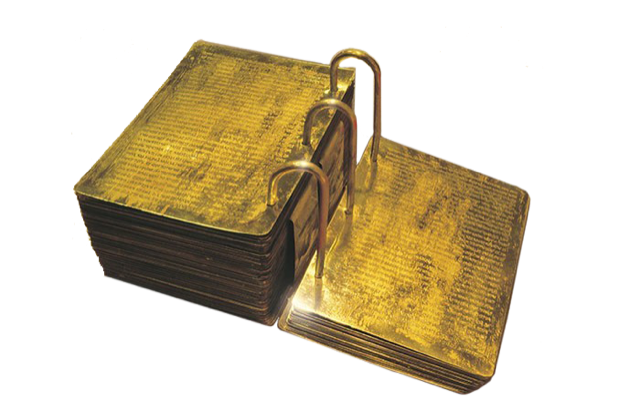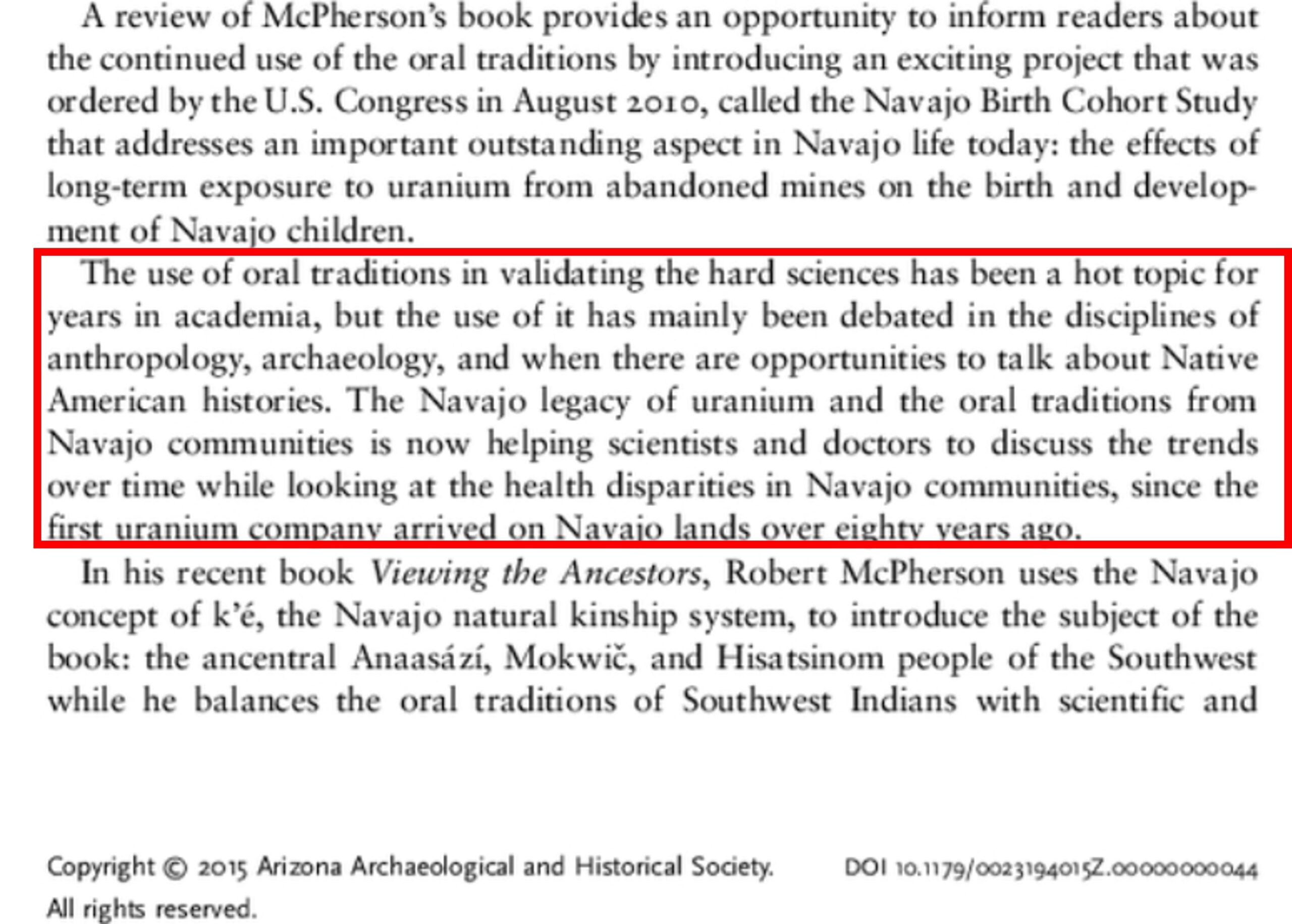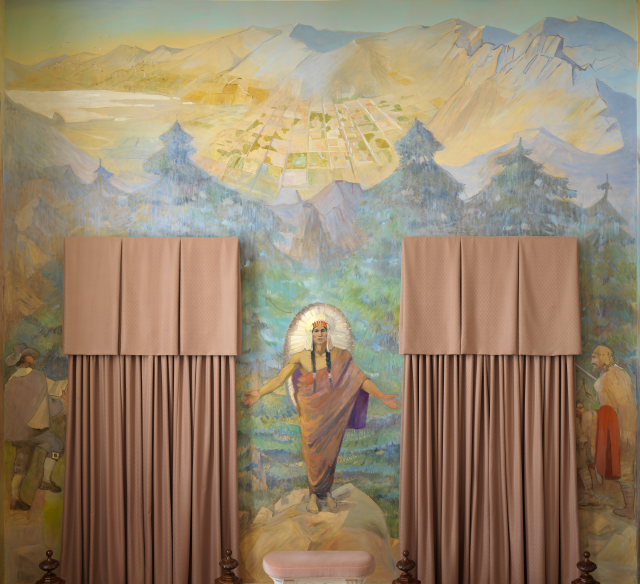Are Written Records Found Among the Original Lamanites?
I have spoken with many Historians and Scholars who believe the Mesoamerican Theory. One of their main reasons they tell me that the Mesoamerica Theory makes sense, and Heartland Theory does not, is the written language of the Mayans and Olmecs and other ancient civilizations is so critically important to any theory of the Book of Mormon, and the Heartland clearly shows no ancient written records about ancient people in North America. 
The traditions of Nephites was about writing things of God on plates of ore to keep records for their posterity and have shared later with their Lamanite brethren. In fact written records were so important to God’s people, Lehi had the Brass Plates retrieved from Jerusalem, and every prophet of God after, kept records as we know. Lamanites or people of the world who had fallen from the true gospel did not normally keep records but maintained oral traditions. It also is very significant that the language of the Nephites and Lamanites would have to be patterned after Hebrew, since Lehi was a Hebrew and descendant of Manasseh through Joseph. “And Aminadi was a descendant of Nephi, who was the son of Lehi, who came out of the land of Jerusalem, who was a descendant of , who was the son of who was into Egypt by the hands of his brethren.” Alma 10:3
Joseph’s Remnant by Allen C. Christensen
“I have a 6th great-grandmother who was a member of the Iroquois Confederacy. It is probable she was a Mohawk. In the early 1700s, her tribe lived along the Mohawk River. Her tribal name was Josnorum Scoenonti—her English name, Running Deer.

Tod S. served a mission among the Navajo people in the later 1970s. He said one day that he and other missionaries saw their mission president, George P. Lee, come out of his office, looking as white as a ghost. President Lee informed them that he had been visited by Chief Joseph, Sitting Bull and a number of important Native American chiefs, and that he, George Lee, had been given their genealogy.
The written record never forgets. In a small way, Joseph’s Remnant is a personal attempt at helping correct that oversight. There are marvelous people, wonderful heroes among the greatgrandchildren of Father Lehi. They are those who have been asked to forgive and pray for those who have despitefully used and persecuted them.” Allen C. Christensen Author, Joseph’s Remnant

Are Nephites Mayan?
 Below is what Book of Mormon Archaeological Forum defines as Records and Writings in their A to Z glossary.
Below is what Book of Mormon Archaeological Forum defines as Records and Writings in their A to Z glossary.
“RECORDS- Nephites kept extensive records (Hel. 3:13). There were also a great many RECORDS kept by the Mesoamericans. [Editors note; No equivalence here]. The central Mexican cultures and the Maya to their east made picture books on animal skins known as codices. Codices have accordion-like pages that run many feet in length. These codices contained genealogies, history, mythology, and astronomical information. At the time of the Spanish Conquest, mounds of these codices were cast into bonfires by Catholic clergy.” BMAF [Editor: What were the dates these codices were written?]
“WRITING In 1 Ne. 1:2 we learn that the record of the Nephites was written in Reformed Egyptian, consisting “of the learning of the Jews and the language of the Egyptians.” Maya hieroglyphs differ from Egyptian hieroglyphs, but [Editor, there should be no “but] the individual glyphs were pronounced in a similar way, in other words, they both used a phonetic system to pronounce syllables. The Mayan written language wasn’t the only one used in Mesoamerica, in fact, some scripts have not yet been deciphered.41″ BMAF http://www.bmaf.org/articles/traditions_only_mesoamerica__wirth
[Editor: The Gold Plates have been deciphered and they are Reformed Egyptian]
Oral Traditions of Native Americans
My mother and my father both served the Native Americans on the Southwest Indian Mission of 1949-51 under Pres. Golden Buchanan. They have told me wonderful stories and oral traditions about the Hopi, Navajo and Apache all my life. I came across this Improvement Era article just a few years ago and as a lover of Lamanite Tradition and one who desires to share the Gospel with our Native brothers and sisters, I wanted to share this with you.
 Golden R. Buchanan was a member of The Church of Jesus Christ of Latter-day Saints. He devoted 16 years to missionary service as president of the Southwest Indian Mission and Salt Lake Regional Mission. He was Indian coordinator for the church and was known for his work with the Indian people. He was known by some as the “father of the Indian Placement Program,” a program in the LDS Church in which thousands of Indian youngsters came to live for a time with LDS families. Pres Buchanan was the first one to invite these wonderful Native Americans to live in his home as the Placement Program began.
Golden R. Buchanan was a member of The Church of Jesus Christ of Latter-day Saints. He devoted 16 years to missionary service as president of the Southwest Indian Mission and Salt Lake Regional Mission. He was Indian coordinator for the church and was known for his work with the Indian people. He was known by some as the “father of the Indian Placement Program,” a program in the LDS Church in which thousands of Indian youngsters came to live for a time with LDS families. Pres Buchanan was the first one to invite these wonderful Native Americans to live in his home as the Placement Program began.
These many Native American Oral Histories, are consistent with the truths we find in the Book of Mormon, in Church History, and in our Sacred Temples today. You can read more about the Cherokee Temple Ordinance similarites here:
https://bookofmormonevidence.org/cherokee-temple-ordinances-2/
Pres. Buchanan said the following:
“The Hopis say that they came across the ocean. The Navajos believe they came up from the other side of the earth through a tube. The Papago’s believe they were guided to this land by divine means. Recently I was on the Papago Reservation. One of our new converts to the Church there told me this story:  “I had never joined any church because the ministers and the priests did not teach the Bible as I read it. I couldn’t read it and make it say the same things the other churches said it did. I speak the Papago language. I have lived among them all my life. I know their story and their traditions. And as I read the Book of Mormon that was placed in my hands by missionaries, I recognized the stories of the Papagos, and I knew the book was true. Your missionaries read the Bible the same way I did. These are the reasons I joined the Church. The Papago’s believed they crossed the ocean and came to this land, that in the ships and on the trails, they were guided by a ball. In this ball was a needle that pointed the direction they were to go. In the Papago language yet today, the name of this ball is ‘Liahona.’
“I had never joined any church because the ministers and the priests did not teach the Bible as I read it. I couldn’t read it and make it say the same things the other churches said it did. I speak the Papago language. I have lived among them all my life. I know their story and their traditions. And as I read the Book of Mormon that was placed in my hands by missionaries, I recognized the stories of the Papagos, and I knew the book was true. Your missionaries read the Bible the same way I did. These are the reasons I joined the Church. The Papago’s believed they crossed the ocean and came to this land, that in the ships and on the trails, they were guided by a ball. In this ball was a needle that pointed the direction they were to go. In the Papago language yet today, the name of this ball is ‘Liahona.’  Navajo tradition tells that a man and his wife and four sons came to this land a long time ago. They have, in their native language, the names of these four sons, but I cannot write them. The oldest two of these sons rebelled against the youngest two who were the appointed leaders. The older sons and their children lived in the forest. They made their living by hunting and by the use of the weapons of warfare. They warred and preyed upon their two younger brothers. They covered their bodies with mud and thus became a dark people. The two younger sons became builders and built cities and houses of stone. They planted gardens and fields. They did not place mud upon themselves and thus remained white. For generations there were fighting, wars, and difficulties, the children of the older sons being the aggressors. Then came a night in which the sun didn’t go down, and it was light all night, and the people were much disturbed and’ distressed. But still there were troubles. Some years after this, came an extended period of darkness… Indian tribes have their own ceremonies. They have their own religions. This was particularly true before the advent of the so-called Christian churches among them. Even today the faithful still cling to their native tradition. Some of them profess Christianity and give token obedience to the so-called Christian churches, but deep in their hearts they still are waiting for the return of the Great White Spirit and the truth.
Navajo tradition tells that a man and his wife and four sons came to this land a long time ago. They have, in their native language, the names of these four sons, but I cannot write them. The oldest two of these sons rebelled against the youngest two who were the appointed leaders. The older sons and their children lived in the forest. They made their living by hunting and by the use of the weapons of warfare. They warred and preyed upon their two younger brothers. They covered their bodies with mud and thus became a dark people. The two younger sons became builders and built cities and houses of stone. They planted gardens and fields. They did not place mud upon themselves and thus remained white. For generations there were fighting, wars, and difficulties, the children of the older sons being the aggressors. Then came a night in which the sun didn’t go down, and it was light all night, and the people were much disturbed and’ distressed. But still there were troubles. Some years after this, came an extended period of darkness… Indian tribes have their own ceremonies. They have their own religions. This was particularly true before the advent of the so-called Christian churches among them. Even today the faithful still cling to their native tradition. Some of them profess Christianity and give token obedience to the so-called Christian churches, but deep in their hearts they still are waiting for the return of the Great White Spirit and the truth.  In many dances, which are largely prayers, significant handclasps are sometimes given. Connected with some of these kiva ceremonies is the wearing of certain types of clothing, and in these clothing are certain marks sacred to the people. I have been told that only the faithful may wear these marks in their clothing, and that only the very good and true may receive these ordinances. Certain washings and anointings are common in many tribes. Usually these are done with water and corn pollen or corn meal, all of which are sacred to the Indian. If it were not for violating confidences, I could take you among the Utes and Paiutes, and tell of certain “ordinances for the dead.” Among many of the tribes there is a tradition that some day the people will lose their dark color and become white… It is interesting to note, in closing, that I know of no Indian language in which one can take the name of the Lord in vain. Indeed, I do not know of an Indian language in which they can even swear. They have to learn English or some white man’s language before they can defile the name of Deity.” Lamanite Tradition By Golden R. Buchanan President, Southwest Indian Mission. Improvement Era April 1955
In many dances, which are largely prayers, significant handclasps are sometimes given. Connected with some of these kiva ceremonies is the wearing of certain types of clothing, and in these clothing are certain marks sacred to the people. I have been told that only the faithful may wear these marks in their clothing, and that only the very good and true may receive these ordinances. Certain washings and anointings are common in many tribes. Usually these are done with water and corn pollen or corn meal, all of which are sacred to the Indian. If it were not for violating confidences, I could take you among the Utes and Paiutes, and tell of certain “ordinances for the dead.” Among many of the tribes there is a tradition that some day the people will lose their dark color and become white… It is interesting to note, in closing, that I know of no Indian language in which one can take the name of the Lord in vain. Indeed, I do not know of an Indian language in which they can even swear. They have to learn English or some white man’s language before they can defile the name of Deity.” Lamanite Tradition By Golden R. Buchanan President, Southwest Indian Mission. Improvement Era April 1955
The oral traditions of nearly all North American Natives, have been shared and kept for many years. These are not normally myths, but deeply held truths of earlier times.
Han Nei Oral Traditions
“The Navajo cosmology comes from the oral traditions of the creation and the emergences through previous worlds before coming to this place where the modern day Navajo live. Navajo children are taught that they are special because they come from a special people. It was a great undertaking for the Navajo people to be. The Navajo have oral traditions to tell them who they are.
NIGHT HOGAN
According to Ella M. Ben of “Beauty Under the Pinon Trees” (Tsaile, Arizona), who is Will Tsosie’s grandmother, one late summer day in the mountain fields, she was sorting corn from the fall harvest. She piled corn by white, yellow, blue, red, black, striped, and finally, the ear of corn of many colors (called Indian corn by the non-Navajo). I asked about the ear of corn of many colors. Grandmother Ella said that this ear of corn of many colors was the most special corn of all. In the first world after A[tse H1stiin and A[tse Asdzaan were created, there is a story that all of the different colors of mist were mixed by Diyin7. Then another beautiful ear of corn appeared, and this was the ear of corn of many colors. This ear of corn of many colors was so beautiful that raven flew down from the sky and stole it.
As raven flew off with the ear of corn of many colors, corn kernels fell out of it. These kernels of corn became the “others.” The others were the other human beings of this world. Where white corn fell it became white people, yellow corn became yellow people, red corn became red people, and black corn became black people. All human beings of this world came from the beautiful ear of corn of many colors. Different languages, history, and lifeways make us beautiful human beings.” https://woodscanyon.net/Navajo/People/Oraltraditions.html
Oral Traditions Validate Hard Science
McPherson Takes a Serious Look at the Oral Traditions of the Southwestern United States.

Solving a Medical Mystery With Oral Traditions
In 1993, Navajo elders provided a key piece of information to CDC scientists and climatologists to help combat a deadly mystery disease.https://daily.jstor.org/solving-a-medical-mystery-with-oral-traditions/
Full Blog Article Below.
Lamanite Tradition





